Have you ever wondered what the optimal megapixel count is for your smartphone camera? With so many different phone models out there, it can be hard to sort through all the different features and specs to determine which one offers the best photo quality. This blog post will explore megapixel counts – how they affect photo quality, and how many megapixels are good for a phone camera. Dive deep into the world of digital photography to find out what’s the best amount of megapixels for your smartphone camera!
Why is the resolution of smartphone cameras important?
Smartphone cameras have come a long way in the last decade and are now able to capture photos with amazing clarity and detail. The resolution of modern smartphone cameras is measured by the number of megapixels, which is how many millions of pixels make up an image. Higher-resolution smartphones can take sharper pictures, allowing you to zoom in on details without losing image quality. Smartphone cameras with more megapixels also offer better low-light performance and can capture a wider range of colors, making your photos stand out from the crowd.
The resolution of a smartphone camera is especially important for those who like to share their photos on social media or online. Photos with higher resolution will look much sharper when viewed on high-definition screens and can be printed out for use in larger prints. Whether you’re shooting landscapes or portrait shots, having a smartphone with a higher megapixel count will ensure your photos look their best.
![]()
What Is A Megapixel?
Megapixels And Camera Sensors
As the technology of cameras has advanced, so too has the resolution capabilities. Megapixels refer to the number of pixels a camera can capture in each photo. A pixel is simply one little dot on your image – having more means you have a higher-resolution image with more detail. For example, an 8-megapixel camera has 8 million pixels per photo – that’s 8 million separate dots, each capturing its own part of the overall image.
Higher megapixel counts mean that you have more resolution and detail in your photo – but there is a limit to how much this matters. How much detail can be captured depends on the size of the camera sensor used in the camera, which affects the overall quality of the image. Additionally, your smartphone’s lens size and quality can play an important role in the final photo.
![]()
For smartphones, you’re mostly looking at cameras with 12-16 megapixels that have a smaller sensor than most dedicated digital cameras. These sensors make it difficult to capture as much light and highlight all of the details in any given scene – but they still provide great resolution and image quality for printing and sharing photos on your social media channels.
Effective Megapixels
When buying a smartphone, you’ll want to pay attention to the effective resolution of your phone’s camera. This is the actual resolution that will be used when taking photos – and it may be less than what is advertised on the specifications. For example, a 16-megapixel camera might have an effective resolution of 12 megapixels in certain conditions. It’s important to remember that just because a camera has higher megapixels doesn’t necessarily mean it will take better photos. After all, your phone’s lens and sensor quality play an important role in the quality of the photo – and resolution isn’t everything.
For example, you might find that a 12-megapixel camera takes sharper images than a 16-megapixel one – this is because the bigger sensor allows for more light to be captured, resulting in better image quality.
When looking at a smartphone’s camera specs, pay attention to the aperture size and sensor size as well. A larger aperture means that more light can enter into the lens, which translates into better photos. Additionally, larger sensors mean that you can capture more detail and color in your photos. All of these factors will determine how good or bad a photo will look, despite the megapixel count [1].
![]()
How Many Megapixels Make A “Good” Camera?
Pros And Cons Of Large Megapixel Counts
When it comes to smartphone cameras, the megapixel count isn’t everything. It’s important to consider both the pros and cons of having a higher megapixel count.
The main benefit of having more megapixels is that you can capture more detail in an image. A higher megapixel count also means that your photo can be printed in larger sizes without losing quality. For instance, a photo taken with an 8-megapixel camera can be printed up to 24 inches at 300 dpi without any significant loss in quality.
On the downside, having too many megapixels can lead to unnecessarily large photos and require more storage space. Additionally, taking pictures with higher megapixel counts takes more time as more data needs to be processed.
When it comes down to it, the optimal megapixel count depends on your needs and preferences. If you’re a professional photographer or someone who regularly prints their work in large format, then opting for a higher megapixel count is probably a good idea. However, if you’re just taking photos for social media or online postings, then a lower megapixel count is probably enough. Ultimately, it’s up to you to decide what works best for your needs.
It’s also worth noting that the megapixel count isn’t the only factor in determining picture quality – other things like sensor size, optics, and post-processing can all play an important role. So if you’re looking for a great smartphone camera, make sure to look beyond just the megapixel count.
How Many Megapixels Should A Professional Camera Have?
For professional photography, higher megapixel counts are usually preferred. For instance, a commercial photographer may opt for a camera with 24+ megapixels to ensure they can capture as much detail as possible. On the flip side, sports and wildlife photographers may need less resolution so they can shoot at faster frame rates.
When it comes down to it, the best camera for you depends on your needs and preferences. If you’re looking to capture fine details, then opting for a higher megapixel count is probably the way to go. However, if you need fast frames per second or better low-light performance, then going with a lower resolution might be more appropriate.
Ultimately, it’s important to do your research before investing in a camera. Consider your needs and the type of photography you’re looking to do, then find a camera that fits those requirements – a megapixel count included [2].
Comparison Of Popular Smartphone Camera Megapixel Counts
Below is a comparison of some popular smartphone camera megapixel counts, listed from highest to lowest:
- Apple iPhone 11 Pro Max: 12MP
- Samsung Galaxy S20 Ultra: 108MP
- Apple iPhone 11: 12MP
- Google Pixel 4 XL: 12.2MP
- OnePlus 8 Pro: 48MP
- Huawei P30 Pro: 40MP
- Samsung Galaxy S10+: 12MP
- Apple iPhone XR: 12MP
As you can see, there’s a wide range of megapixel counts available across different smartphone models. So you can find the one that suits your needs best, regardless of whether it’s a high megapixel count or something more modest.
![]()
What Camera Has The Most Megapixels?
Cameras With The Most Megapixels Via Sensor Size
When it comes to cameras with the most megapixels, sensor size is one of the determining factors. The bigger the size of a camera’s sensor, the more megapixels it can accommodate. A larger sensor allows for better detail and improved image quality.
The largest sensors currently available on smartphones are usually found in flagship devices like Samsung’s Galaxy S20 Ultra, which has a 1/1.33-inch sensor with 108 megapixels. Other phones like the Huawei P30 Pro and Xiaomi Mi 10 Pro also feature large sensors but come in at lower resolutions of 40MP and 48MP respectively.
Cameras With The Most Megapixels Via Camera System
Another way to determine which phone has the highest megapixel count is to look at its camera system. Most flagship devices today come with multiple lenses with varying resolutions, allowing users to get more resolution out of their photos.
For example, Apple’s iPhone 11 Pro Max comes with three 12MP cameras that can be combined for a 48MP image, while Huawei’s P30 Pro has three 40MP lenses that can be combined to create a 120MP image. Huawei’s P40 Pro also offers the same resolution with its five 50MP cameras, making it one of the camera-phone models with the highest megapixels available on the market.
Cameras With The Most Megapixels Via Pixel Stacking Technology
The latest trend in camera technology is the use of pixel stacking technology, which allows for higher-resolution images by combining multiple pixels. This technology is currently being implemented on select high-end phones like Samsung’s Galaxy S20 Ultra, which incorporates a 108MP sensor that can produce up to 12K resolution photos. Pixel Stacking technology also has the potential to drastically increase the resolution of images in low-light conditions, making it a great feature for night photography.
![]()
How Does Megapixel Count Affect Camera Quality?
When it comes to choosing a smartphone, one of the most important factors is camera quality. The megapixel count is usually used as an indication of the device’s photographic capabilities – the higher the count, the better the picture should be. But while megapixels do give some measure of a camera’s ability, they don’t tell you everything about its performance.
For instance, a higher megapixel count doesn’t necessarily mean that the camera will take better low-light photos. It also doesn’t provide any insight into the quality of the optics used in the device or how well it handles noise reduction. To understand your smartphone’s camera capabilities, you need to look at more than just its megapixel count.
One other important factor to consider is the size of the image sensor. A larger image sensor can capture more light, leading to better quality photos – even if it has a lower megapixel count. This is why some smartphones with lower megapixels can produce pictures that seem comparable to those taken with devices boasting higher megapixels.
It’s also worth noting that post-processing and editing capabilities can further enhance the photos taken with your smartphone. Editing tools like Adobe Lightroom allow you to adjust exposure, contrast, saturation, and other settings to get the perfect shot. With a little bit of tweaking, even a low-megapixel camera can produce professional-looking images.
In short, megapixels are an important factor to consider when choosing a smartphone, but it’s not the only one. Other details such as the size of the image sensor and quality of optics also contribute to the camera’s performance. Additionally, with some post-processing and editing tools, you can further refine your shots to get the most out of your device – regardless of its megapixel count [3].
![]()
FAQ
How many megapixels is good in a mobile camera?
That depends on what you’re looking for in a mobile camera. If you are looking for great detail and sharpness, then more megapixels will give you better-quality photos. A smartphone with 8-12 megapixels is usually good enough to produce good-quality images, but if you want the highest level of detail the most current phones have around 16 or even 20 megapixels. Additionally, it’s important to consider the quality of the lens and other components in addition to the number of megapixels when selecting a good smartphone camera. In some cases, features like optical image stabilization or dual lenses can be more important than the number of megapixels.
How do mobile cameras compare to digital cameras?
Mobile cameras have come a long way in recent years, but they still can’t compete with digital cameras when it comes to quality and features. Smartphone camera photos will typically be of lower resolution and poorer quality than those taken on a digital camera, due to the smaller size and number of megapixels available in mobile cameras. Digital cameras also offer more creative control over the image, such as adjustable aperture and shutter speed, manual ISO settings, and focus control. If you are looking for high-quality images with a lot of creative control, then a digital camera may be the better option. However, if you want to take quick snapshots or photos that can easily be shared online then a smartphone can be a great choice.
Is 12MP better than 64MP?
It depends on the context and what you’re looking for. If you are looking for a lot of detail in your images, then a 64MP camera will likely produce much better quality photos than one with only 12MP. However, 64MP cameras use more power, create larger files and may not have as many other features (such as optical image stabilization or dual lenses). So depending on your needs, either one could be better. For most people, a 12MP camera should provide good-quality images without being too bulky. Additionally, it’s important to consider the other features available in the camera when choosing which one is best for you.
Does more megapixels mean better photos?
More megapixels don’t always mean better photos. While megapixels are an important factor in the quality of your images, they are not the only one. The lens, image processor and other components also play a role in how good your pictures will come out. Additionally, if you don’t have enough light or use too much digital zoom then even the best camera won’t be able to create good-quality photos. So while more megapixels may help improve your images, other factors should be considered when choosing a camera.
What is the difference between megapixels and resolution?
Megapixels measure the number of pixels in an image, which affects its overall size and detail. Resolution refers to the amount of detail in an image and can be affected by factors such as the camera’s lens, the ISO setting used, and the amount of digital zoom. So while megapixels are important for an image’s size and detail, resolution has to do with the overall quality of an image. Both are important when considering a camera but it’s important to understand how they work together to create good-quality images.
What is the best megapixel camera?
The best megapixel camera will depend on your personal needs and preferences, as well as what you are looking for in a camera. Some people may prefer cameras with lower megapixels that offer more features like optical image stabilization or dual lenses, while others may need higher-resolution images for larger print sizes. It’s important to consider all the features available on a camera, as well as its megapixels when choosing the best one for you.
How do mobile cameras compare to DSLRs?
Smartphone cameras can be great for quick snapshots and sharing online, but they still cannot compete with DSLR cameras when it comes to image quality and professional-level features. DSLRs offer higher resolution, more control over the image, and a greater range of creative options. Additionally, they are usually built with larger sensors which largely contribute to the overall image quality. So if you want to take professional-quality photos then a DSLR is likely the better option, however, if you need something quick and easy then a smartphone camera may be the better choice.
Is 50mp better than 12MP?
Generally speaking, yes. A 50MP image will have much more detail and resolution than a 12MP image due to the larger number of pixels in the image. However, it is important to keep in mind that the quality of an image also depends on other factors such as lens quality, ISO settings and digital zoom. So even if you have a 50MP camera,if the other components are poor then you won’t be able to create good-quality photos. Additionally, 50MP cameras can be more expensive and take up more space than 12MP ones, so it’s important to consider your needs when deciding which one is best for you.
Why does Apple use a 12MP camera?
Apple typically uses 12MP cameras in their iPhones because they believe it is enough to create high-quality images without being too bulky or consuming too much power. Additionally, the company has invested heavily in other features such as optical image stabilization and dual lenses which help produce better photos than would be available with higher megapixel counts. Apple also believes that a higher megapixel count can lead to image noise or distortion, which would be unappealing to their customers. So while some of their competitors may use higher megapixel count cameras in their phones, Apple has opted for 12MP as a good balance between quality and performance.
Useful Video: 108-Megapixel or 12-Megapixel: Which Sensor Can Capture Better Photos? | Megapixels Explained
Conclusion Paragraph
So, megapixel counts in smartphone cameras are not everything, and it is important to research other specifications such as aperture sizes and sensors before deciding on a certain model of phone. In most cases, more megapixels will allow you to take higher-resolution pictures, but the difference in quality may be negligible when compared to fewer megapixels combined with a superior lens or sensor. Ultimately, it is up to the consumer to decide which features they want in their smartphone camera, and megapixels should be just one of the many factors considered. Additionally, brands that prioritize picture quality may provide additional features like editing tools or a better zoom range that can prove even more useful than a high megapixel count on its own.
References
- https://www.studiobinder.com/blog/what-is-a-megapixel-definition/
- https://luckystraps.com/blogs/the-lucky-straps-blog/how-many-megapixels-do-you-really-need-for-photography
- https://www.slrlounge.com/what-are-megapixels-and-do-they-matter-minute-photography/





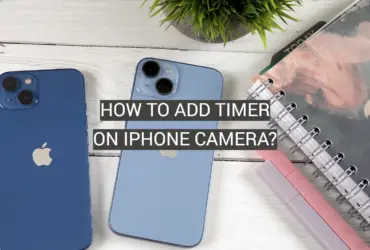
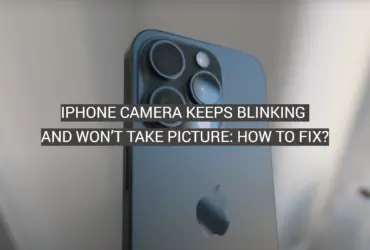
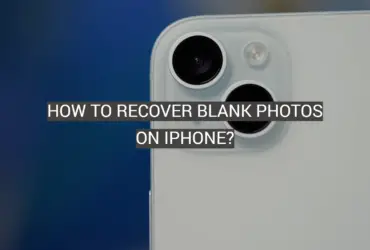
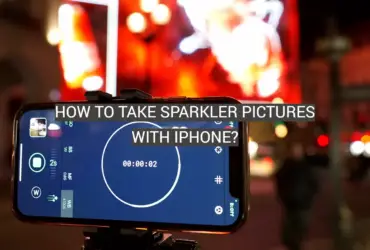
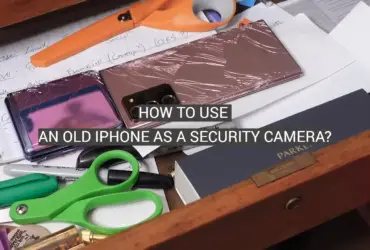
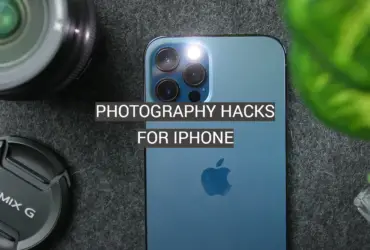
Leave a Reply